The nuances of caring for strawberries in early spring
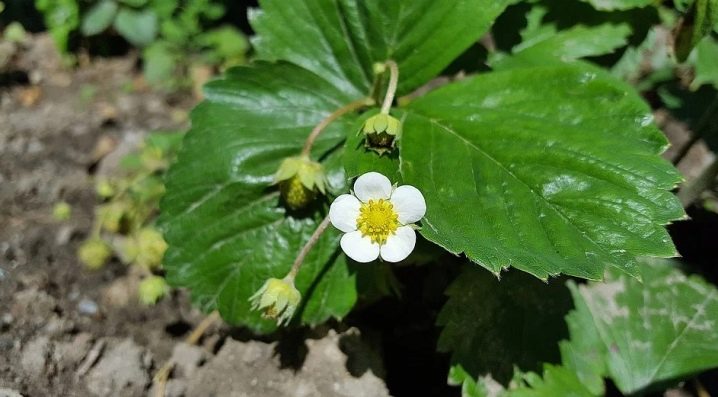
Strawberries are a pretty whimsical crop. To get a good harvest of delicious berries, the owners of the site have to work hard. Most of the work is done in the spring. From the very beginning of the season, gardeners have to clean up the site, cut the bushes, and also feed their beds.
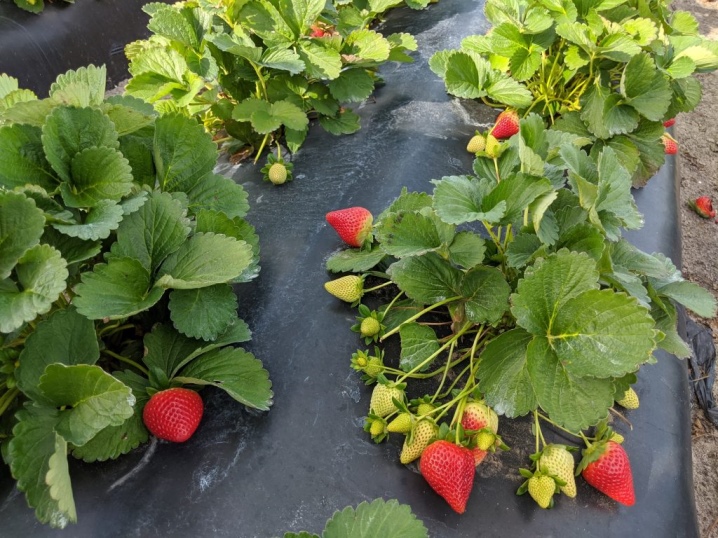
When to start work?
Strawberries wake up quite early. Therefore, they start caring for the beds in early spring. The time of the work depends on the characteristics of the region. In the Moscow region, strawberries begin to look after in the second half of March. In warm regions of the country, the first spring procedures are carried out even earlier. But in Siberia, work is usually postponed until April.
To start rebuilding the beds early after winter, the gardener can speed up the melting process. For this, the site should be sprinkled with ash, coal or tobacco dust.
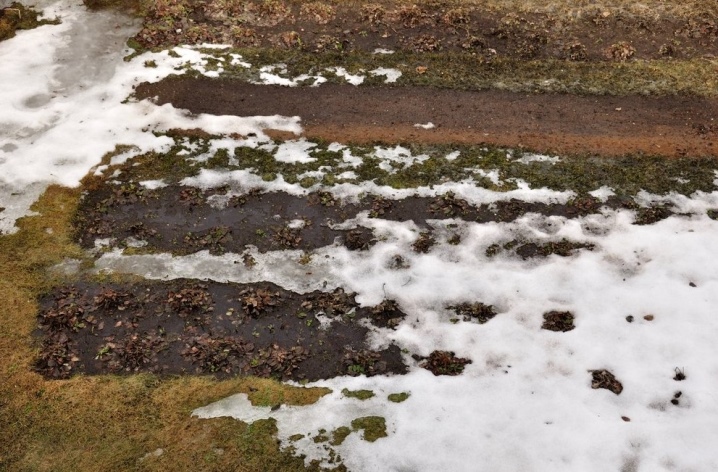
Cleaning and trimming
It will not be possible to put the site in order after winter in one day. The process should start by cleaning the beds, as well as trimming old bushes.
- Removing the shelter. If the plot with garden strawberries was insulated for the winter, then immediately after the snow melts, the shelter must be removed. This is done so that the bushes do not get locked up. If they were covered with rolled insulation, it must be carefully rolled up and removed from the site. Some gardeners prefer to cover the soil with dried sawdust. They also need to be disposed of in the spring. Next, you need to scoop up the remnants of vegetation and last year's foliage. If the site is clean, the root system of the bushes will begin to warm up well. Thanks to this, the plants will grow and bear fruit better.

- Pruning... To revitalize the site, the strawberry bushes must be carefully trimmed with a sharp pruner. All old and damaged leaves must be cut out. Next, the site must be cleaned of last year's peduncles, as well as unnecessary mustache. Do not be afraid to remove these parts of the plant. Pruning on time will make the strawberries bear fruit better and the berries will become larger and tastier. After all, they will get more nutrients. You need to trim the leaves right at the base of the bush. Otherwise, the roots will attract pests.
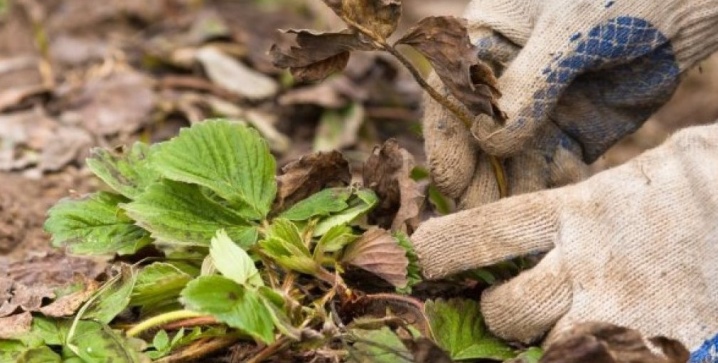
- Removal of all waste. Cut leaves, whiskers and peduncles must be collected and burned or taken out of the site. This is done in order to accurately get rid of all pests that could hibernate on them.
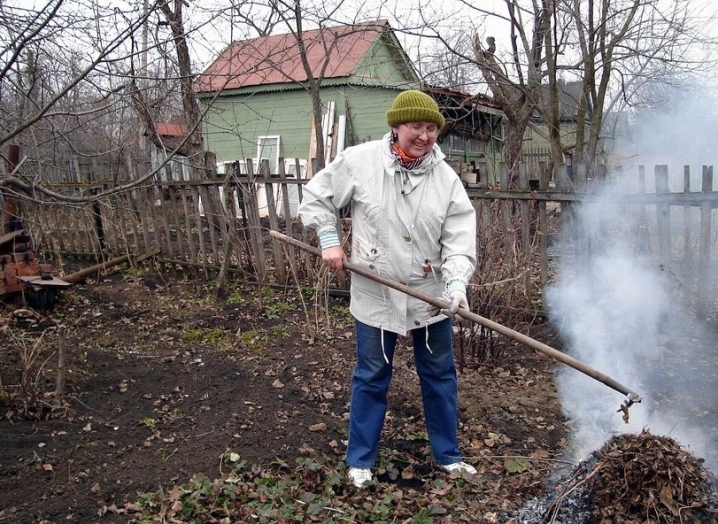
- Loosening the site. Having finished removing plant residues and debris, the soil in the beds must be carefully loosened. This procedure improves the condition of the soil.

At this stage, the preparation of the site is completed.
Transfer
In addition to harvesting, strawberry bushes are transplanted in the spring. Usually transplanted all plants bearing fruit within 3-4 years. During this time, they deplete the soil. Because of this, their berries become small and not as tasty as they used to be.
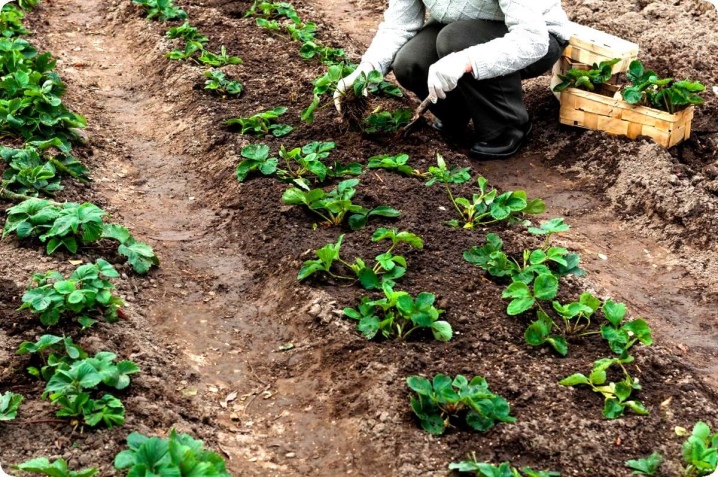
The transplant process is as follows.
- First you need to select those specimens that need transplantation.
- They must be carefully dug, trying not to injure the root. Next, the plant must be removed from the ground, and then cleaned.
- A large bush must be divided into two parts. Each individual seedling must be strong enough.
- Next, the roots must be dipped in a weak solution of potassium permanganate.
- On the site, make the required number of holes of a suitable size. The bottom of each of them must be loosened with a rake. Nitrogen fertilizer must be applied to the soil. This will speed up the growth of the strawberries.
- Next, a small amount of warm water should be poured onto the bottom of the pit. When it is absorbed into the soil, a seedling must be placed in the hole.
- Holding the plant, the hole must be covered with earth.
Plants transplanted in this way quickly take root.
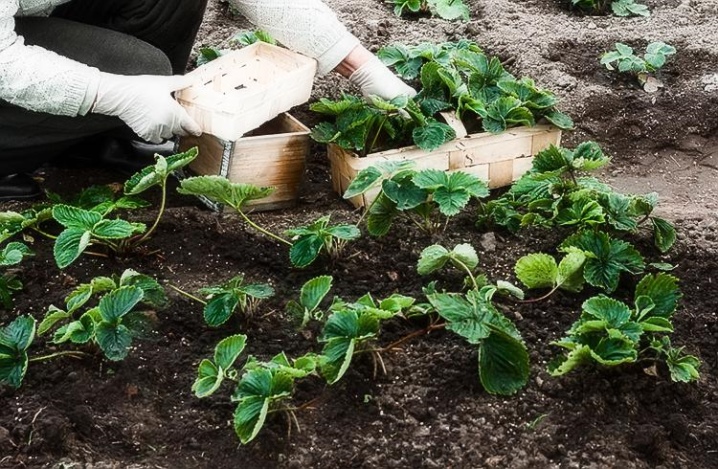
Watering nuances
In early spring, the beds are still saturated with melt water. But it evaporates very quickly. Therefore, the site must be closely monitored. Once the soil is dry, the strawberries will need to be watered regularly.... This is due to the fact that the root system of these plants is superficial. If you do not water the strawberries on time, they will quickly wither and the process of ovary formation will slow down.
Watering the strawberries is necessary at the root. This is best done in the early morning or after sunset. The water used for irrigation must be warm. It will be correct to use the settled liquid.
Rainwater is excellent for this purpose.
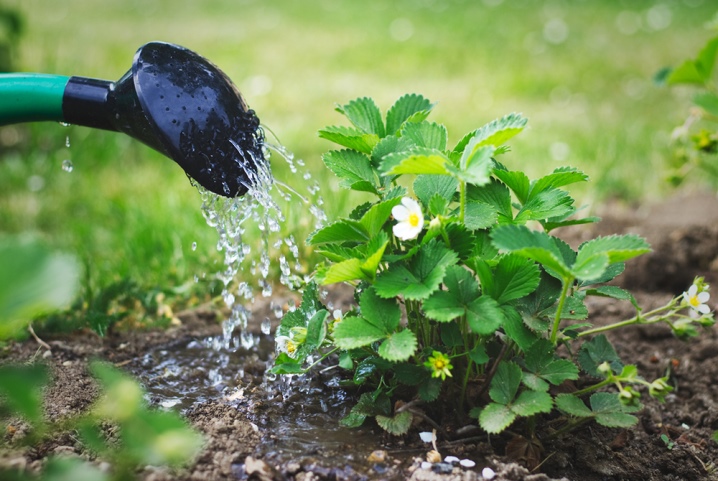
At the same time, it is important to ensure that the site is not waterlogged. Excess moisture can lead to rot in the beds. If the spring is rainy and cool, you should refuse watering. After full moistening of the site, the bushes are recommended to be mulched. This can be done using sawdust, pine needles, or fresh straw.
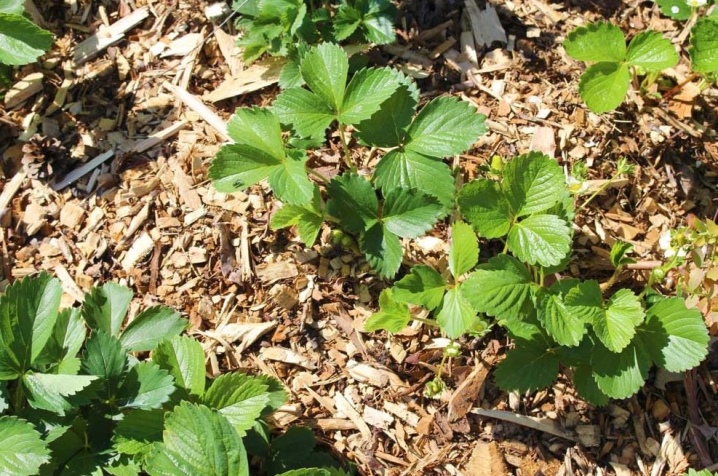
Top dressing
Timely feeding of plants also plays a huge role. Fertilizing the beds immediately after the snow melts is very useful. After all, it is in early spring that the bushes grow most actively. It is worth starting work after the warm weather is established. At this time, it is recommended to use organic nitrogen fertilizers.
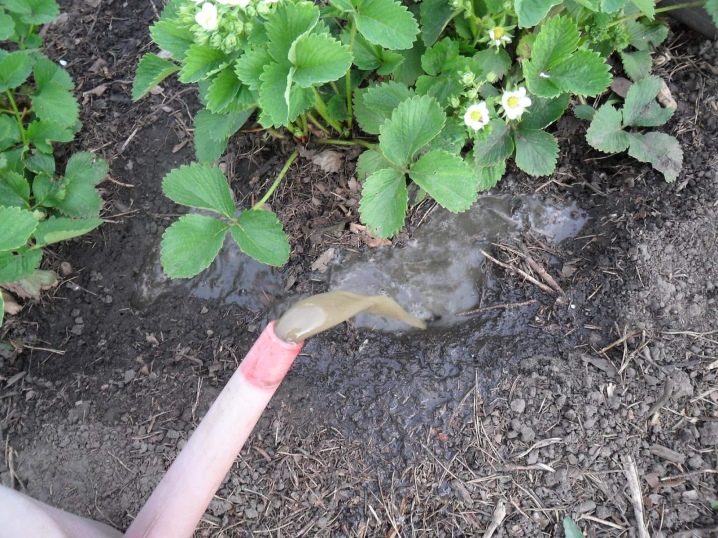
The following folk remedies are suitable for feeding.
- Mullein... You can saturate the soil with useful substances and restore the beds after winter using mullein infusion. For its preparation, 250-300 grams of manure must be poured into one bucket of water. Next, the product must be mixed well and sent to a dark place for several days. The resulting composition can be used to fertilize both young and adult bushes. It is brought into neat, even grooves that are located between the rows.
- Humus... This product does not need to be diluted with water first. Usually it is simply scattered under the bushes. It not only fills the soil with nutrients, but also plays the role of mulch.
- Kuryak... This fertilizer is an excellent source of nitrogen. Therefore, it is beneficial for them to feed strawberries that sprout or recover after winter. It is not recommended to use it in its pure form. Usually the product is diluted in warm water in a ratio of 1 to 20. This solution is infused for several days, and then used to water strawberry bushes.
- Herbal infusion. This product allows you to quickly revive plants. For its preparation, you can use any weeds that grow at this time on the site or near it. Fill a third of the bucket with herbs. Next, you need to add water to the container. In this form, the infusion should be left overnight. In the morning it must be diluted with water in a ratio of 1 to 3. The resulting product is immediately used for watering green bushes.
- Wood ash... If the strawberry bushes look bad, you can try feeding them with wood ash. A glass of product must be poured with a bucket of settled water. The contents of the container must be mixed and used for watering the bushes.
- Yeast... You can activate strawberry growth using regular yeast. They contain a large amount of nutrients. Therefore, they are ideal for feeding the garden beds in early spring. Use the product only in warm weather. An infusion is prepared from 200 g of raw yeast and half a liter of warm water. Insist on it for only 25-30 minutes.Immediately after this, plants are watered abundantly.
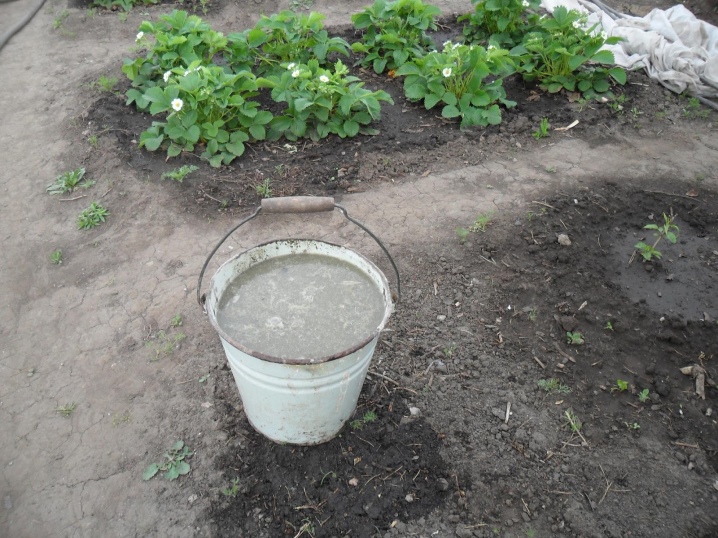
Strawberries also respond well to leaf feeding. For such treatment of the site, it is worth using less concentrated products. The infusions are usually diluted in a 1 to 1 ratio. You need to process the site on cloudy days. In spring, plants can also be fed with commercially available complex fertilizers. Shrub feed products can be found at most gardening stores.
The yield of plants largely depends on how well the gardener feeds the strawberries for the first time in a year. Therefore, do not miss the opportunity to fertilize your site well.

Treatment against diseases and pests
Strawberries are very often sick and suffer from attacks of various pests. To protect your beds, it is necessary to carry out preventive treatment of the site in the spring. This procedure consists of the following steps.
- Immediately after the removal of plant debris and the timely loosening of the soil, the soil must be treated with copper sulfate or Bordeaux liquid. This procedure protects the area from a variety of fungal diseases.
- After a while, the bushes must be sprayed with insecticides. This is done in order to protect the site from common pests. It is recommended to spray strawberry beds with "Karbofos" or similar preparations.
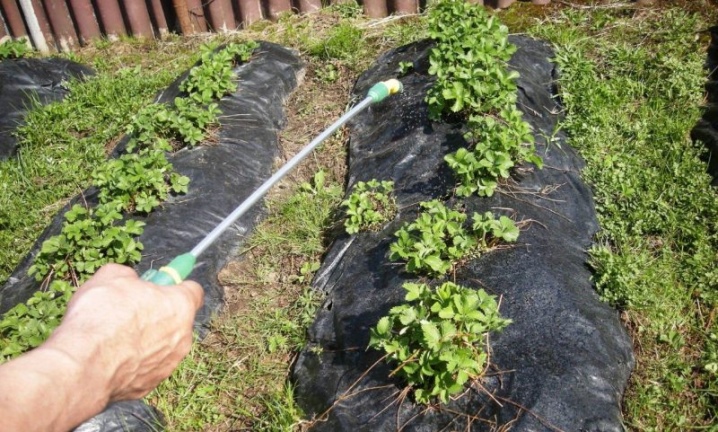
If there were no pests on the site last season, and the bushes did not hurt, you can do with simple folk methods. There are several products you can spray on your garden beds in early spring.
- Ammonia. This product helps to fight all the main pests of strawberries. In addition, it is considered an excellent nitrogen fertilizer. For watering plants, a solution is used, consisting of 40 ml of ammonia and 10 liters of water.
- Mustard... Mustard powder is used to prepare the infusion. One hundred grams of the product is poured with 10 liters of warm water. The product is infused for two days. After that, the infusion is diluted in a 1 to 1 ratio. You can use it for watering immediately.
- Garlic... In the fight against spider mites, garlic infusion will help the gardener. To prepare it, 300 grams of garlic cloves must be chopped and added to a bucket of water. The product is infused for 24 hours, and then used to spray leaves and soil next to the bushes. This tool is highly effective.

To kill the larvae of common pests, strawberry bushes can also be watered with ordinary hot water. It is watered both the bush itself and the soil around it.
This method can be used to process only dormant bushes.
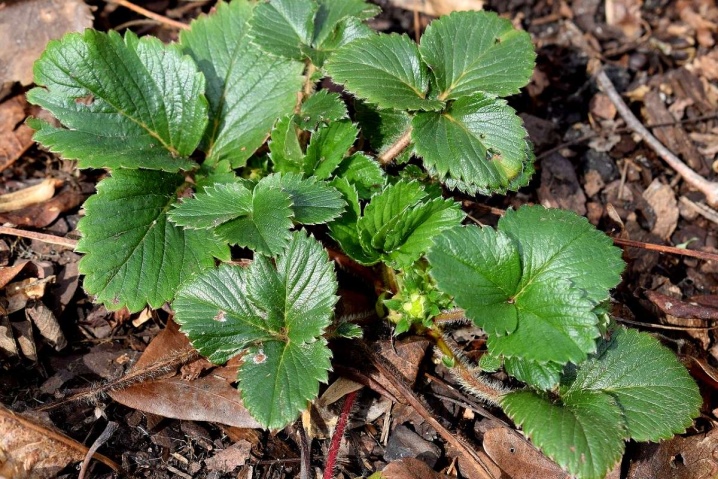
Features of caring for different bushes
When caring for Victoria or ordinary garden strawberries, you need to take into account its age.
Old
Old bushes need a closer inspection. If the strawberries have brown shoots or dry leaves, they should be trimmed. Bushes that are affected by mold or any other diseases are recommended to be removed from the site. Resuscitation of such plants will no longer bring results.
Large bushes can be planted immediately after the snow melts. This should be done if the gardener likes the taste of berries, and strawberries have been growing in one place for more than two years.
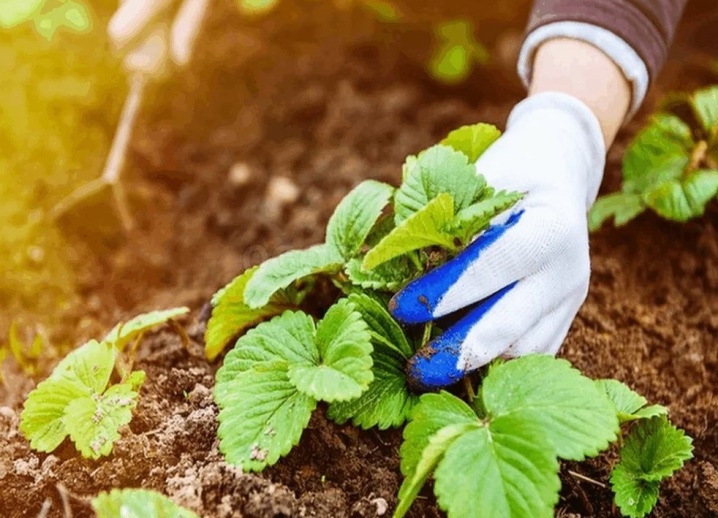
Young
Bushes that have been planted on the site recently need good feeding. In young plants, it is also recommended to trim the whiskers. In this case, more new shoots will appear on them.
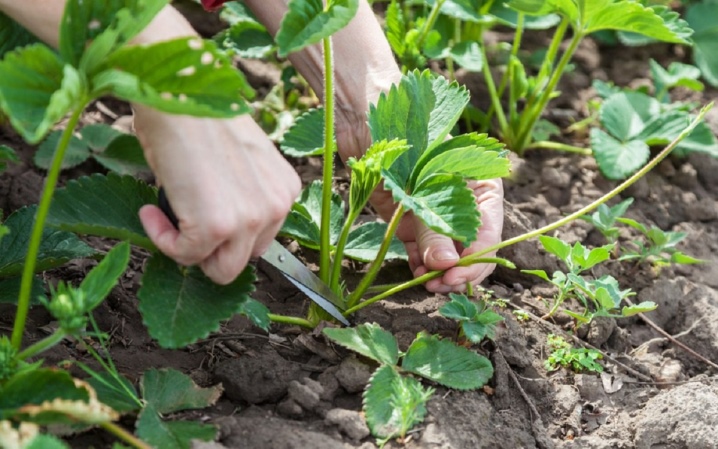
Common mistakes
To keep strawberries looking good and always healthy, you need to avoid the most common mistakes that gardeners often make.
- Untimely pruning of bushes. If you do not remove all the leaves and whiskers that have turned black, dry or deformed in time, they will take up a large amount of nutrients. This will slow down the process of plant development.
- No mulch... If the strawberry beds are not mulched, the strawberries will need more watering.In addition, the lack of mulch leads to decay of the berries.
- Improper watering... In order not to harm the remontant or regular strawberries, it must be watered correctly. It is best to use warm and settled water. It is not recommended to water the plants during the day.
- Untimely removal of shelter... If the weather in the region is unpredictable, there is a possibility of frost, then it is worth postponing the removal of the shelter.
- The wrong choice of place for the beds. It is worth planting strawberries in well-ventilated and lighted areas. Otherwise, the plant will often get sick.
- Too much fertilizer used. Do not add too much dressing to the soil. It will not do the good for the plants.
If you properly care for strawberries in early spring, then delicious and sweet berries will very quickly appear on the bushes.
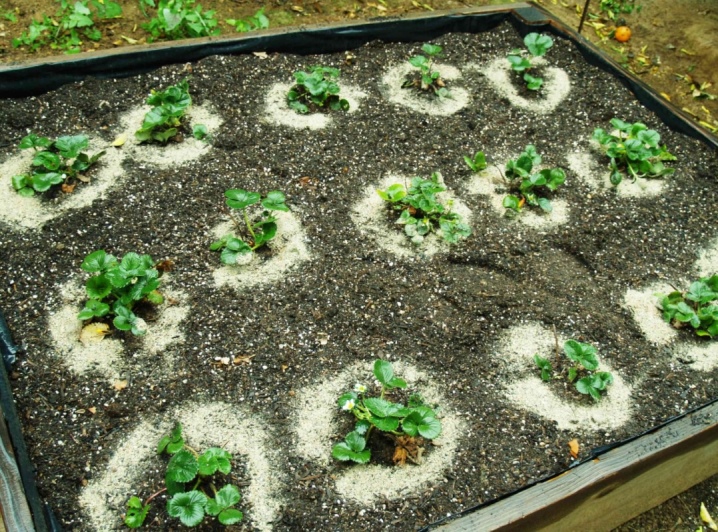













The comment was sent successfully.